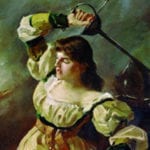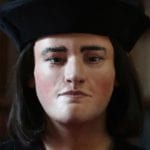 Music
Music  Music
Music  History
History 10 Less Than Jolly Events That Occurred on December 25
 Weird Stuff
Weird Stuff 10 Funny Ways That Researchers Overthink Christmas
 Politics
Politics 10 Political Scandals That Sent Crowds Into the Streets
 Weird Stuff
Weird Stuff Ten Bizarre Facts About The Doge Meme
 Our World
Our World 10 Ways Your Christmas Tree Is More Lit Than You Think
 Movies and TV
Movies and TV The 10 Coolest Stars to Set Sail on The Love Boat
 History
History 10 Things You Didn’t Know About the American National Anthem
 Technology
Technology Top 10 Everyday Tech Buzzwords That Hide a Darker Past
 Humans
Humans 10 Everyday Human Behaviors That Are Actually Survival Instincts
 Music
Music 10 Surprising Origin Stories of Your Favorite Holiday Songs
 History
History 10 Less Than Jolly Events That Occurred on December 25
 Weird Stuff
Weird Stuff 10 Funny Ways That Researchers Overthink Christmas
Who's Behind Listverse?

Jamie Frater
Head Editor
Jamie founded Listverse due to an insatiable desire to share fascinating, obscure, and bizarre facts. He has been a guest speaker on numerous national radio and television stations and is a five time published author.
More About Us Politics
Politics 10 Political Scandals That Sent Crowds Into the Streets
 Weird Stuff
Weird Stuff Ten Bizarre Facts About The Doge Meme
 Our World
Our World 10 Ways Your Christmas Tree Is More Lit Than You Think
 Movies and TV
Movies and TV The 10 Coolest Stars to Set Sail on The Love Boat
 History
History 10 Things You Didn’t Know About the American National Anthem
 Technology
Technology Top 10 Everyday Tech Buzzwords That Hide a Darker Past
 Humans
Humans 10 Everyday Human Behaviors That Are Actually Survival Instincts
10 Amazing Tales Of The Conquistadors Left Out Of History Books
The conquistadors were Spanish and Portuguese soldiers who explored much of the world during the Age of Discovery. They are best remembered for their conquests and exploration of the Americas. Conquistadors like Hernan Cortes and Francisco Pizarro became legendary for their conquests of the Aztec and Inca Empires, honored as national heroes for centuries after their deaths.
In modern times, people have taken a more skeptical view toward the conquistadors, dismissing them as greedy and careless barbarians interested only in gold. While this was true of many of them, the conquistadors were certainly a fascinating lot of adventurers, filled with larger-than-life characters whose dreams, failures, and occasional triumphs—overshadowed by the big, successful names like Cortes and Pizarro—make for some fascinating stories.
10 Juan Garrido
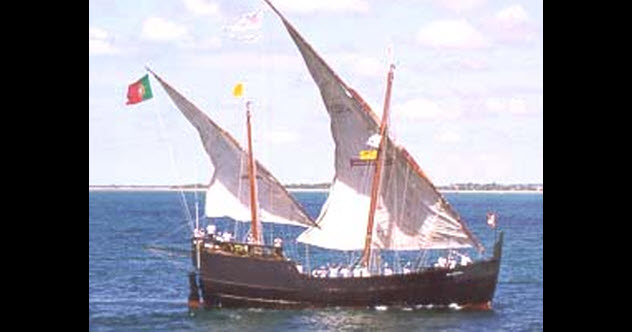
It’s commonly taught in American history classes that the first Africans to arrive in what is now the United States were the slaves brought to Jamestown, Virginia, in 1619. However, this is not true. The first African to set foot on American soil was Juan Garrido, a free man and conquistador who participated in the first Spanish expedition to Florida in 1513.
Garrido’s early years aren’t particularly well documented, but we do know that he was born somewhere in West Africa around 1480. For whatever reason, he moved to Lisbon, Portugal, in 1495 and took the name “Juan Garrido” after he converted to Christianity. He later moved to Spain, where he joined an expedition from Seville to modern-day Hispaniola in 1508. Once in the New World, he took part in a number of colonization efforts, including Hernan Cortes’s conquest of the Aztecs.
The Spanish government gave him some property in Mexico City to thank him for his service, and Garrido practiced farming when he wasn’t out on military expeditions. He mostly grew wheat, possibly the first person in the Americas to do so. Garrido lived in Mexico City the rest of his life, marrying and having three children before he died sometime in the late 1540s.
9 Francisco de Orellana
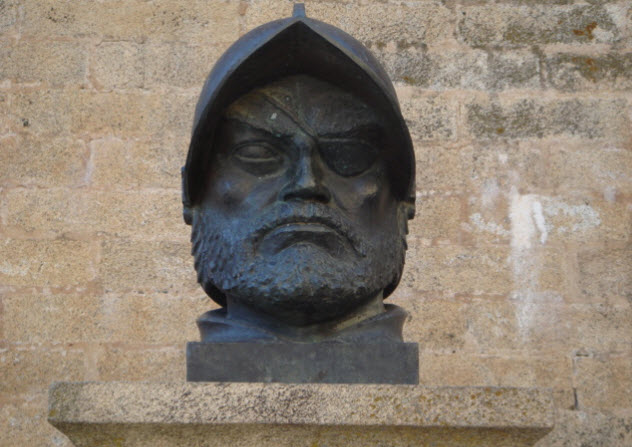
Francisco de Orellana served as a lieutenant in an expedition to the lands east of modern-day Quito, Ecuador, in 1540. Under Gonzalo Pizarro, the half-brother of Francisco Pizarro, the mission was to find gold, silver, and cinnamon. After the group reached the Napo River, Orellana and 50 other men were ordered to move ahead and look for supplies. Orellana’s party eventually reached the Amazon River, which they decided to explore because the current was too strong to let them turn back.
The navigation of the river was tough, with the party constantly attacked by unfriendly tribes. Orellana and his men preferred raiding and burning down villages over trying to improve relations with the natives. At one point, they were ambushed by a dozen archers, all of them women. Orellana was so impressed by the ferocity of the female warriors that he named the river they were navigating the “Rio de las Amazonas.”
Orellana’s crew finished their navigation of the river in August 1542, becoming the first Europeans to do so. They went on to Trinidad and then sailed to Spain, where Orellana was given permission by King Charles I to lead an expedition in the Amazon basin. His return trip was a tremendous failure. Orellana lost men and ships on the way across the Atlantic before he also drowned when his boat capsized at the mouth of the Amazon River.
8 Gonzalo Pizarro
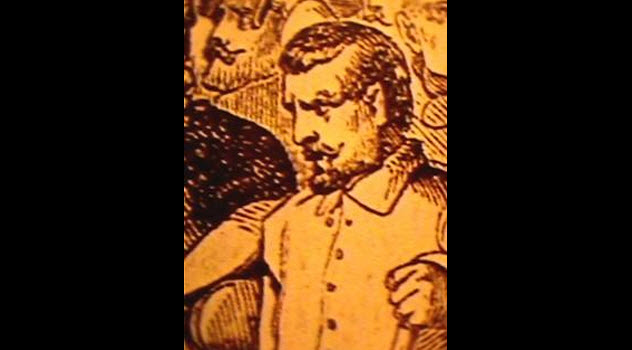
After anxiously waiting several months for Francisco de Orellana to return with supplies during their expedition to the territory east of Quito, Gonzalo Pizarro realized that Orellana wasn’t coming back. In August 1542, Pizarro and his few remaining men decided to return to Quito. Pizarro lost most of the 200 Spaniards who had accompanied him and all of the 4,000 natives who also took part in the expedition.
Things got even worse when he arrived in Quito. He learned that his famous half-brother Francisco Pizarro had been assassinated a year earlier. There was also growing discontent with the way that King Charles I was treating the Spanish colonists in the New World. That same year, as Charles I sent a viceroy to Peru, the king passed new laws meant to better protect the tribes and weaken the powers of the conquistadors by limiting their encomiendas. An encomienda was a native village given to a Spanish soldier in return for his service. The owner of the encomienda was entitled to the area’s land as well as the labor of its inhabitants. Under these harsh conditions, priests were generally appalled and fought to abolish the system.
Colonists enraged at the new laws pleaded for Pizarro to help them fight against the Spanish crown. He agreed and launched a rebellion against the new viceroy in 1544. In 1546, his forces defeated the viceroy in battle and killed him. The antiroyalists fought for another two years until they were put down by Viceroy Pedro de la Gasca. Pizarro was convicted of treason and beheaded on April 10, 1548.
7 Francisco de Ulloa
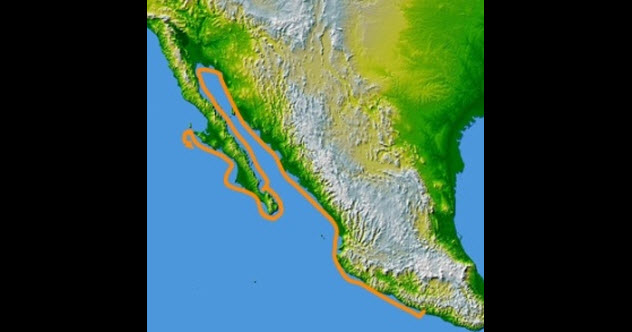
The early conquistadors heard many myths and legends from the indigenous American people about immensely wealthy lands that were essentially paradise on Earth. They suspected that one territory, a region off the coast of northern Mexico, was the island of California. California, named after its queen Calafia, was said to be a country entirely ruled by black Amazons who used weapons made of gold. The Californians fed their baby boys to griffins, and the griffins, in return, carried adult men off and dropped them from the sky.
However, this California had no basis in reality. It was entirely made up by an obscure Spanish novelist named Garci Ordonez de Montalvo. But the conquistadors didn’t know that, and when they discovered modern-day Baja California, they decided that it must have been the mythical island.
In the 1530s, several expeditions established that there weren’t any black Amazons in the region, only local tribes. While the Amazon myth had been debunked, it was still believed that California was an island. In 1539, Hernan Cortes sent Francisco de Ulloa on another expedition to the region. After sailing up the coast of Baja California and noticing that he was blocked off, Ulloa realized that Baja California wasn’t an island but a peninsula. Ulloa’s discovery was ignored by many later cartographers and explorers, and the mistaken belief that Baja California was an island persisted into the 18th century.
6 Sebastian de Belalcazar
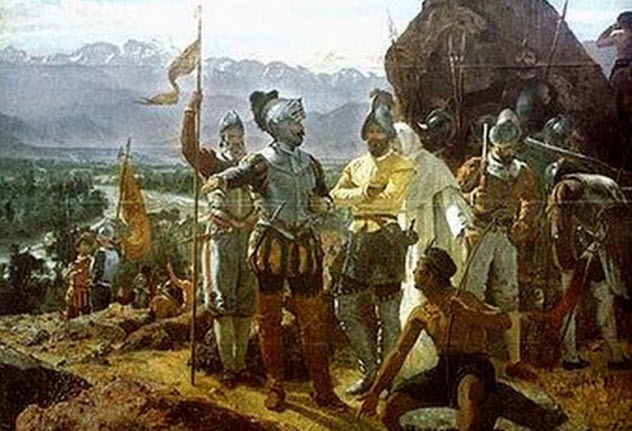
Sebastian de Belalcazar’s origins are murky, but he’s believed to have been born with the name Sebastian Moyano in the south of Spain around 1495. While some relatives of his family were members of the low nobility, Moyano’s father was a poor woodman. Sebastian would run errands for his father, normally going around his town of Belalcazar and selling wood carried by a donkey companion. His wood-selling days ended sometime in his teenage years when the donkey got stuck in some mud, and an enraged Sebastian grabbed a stick and beat the poor creature to death with it. Rather than face the consequences for his outrageous temper, Sebastian ran away from home to the city of Cadiz.
By 1519, Sebastian had traveled to the New World as part of an expedition to Panama. He claimed that he had forgotten his original surname, so his friends called him “de Belalcazar” after his hometown. Throughout the 1520s and 1530s, Sebastian participated in a number of conquests, serving in missions to modern-day Ecuador, Nicaragua, and Peru. Although he became a celebrated leader, he was also infamous for his brutality. During his conquest of Quito in 1534, Sebastian and his soldiers stumbled upon a village where all the men were away fighting. Even though the remaining villagers were only harmless women and children, Sebastian ordered that they all be killed as a warning.
In 1541, he gave up his life of adventure and became the governor of the province of Popayan. He was a terrible administrator and failed to settle land disputes between other Spaniards. After he executed another Spanish governor, Jorge Robledo, Sebastian was arrested and sentenced to death. Sebastian planned to appeal his sentence to the Spanish government but died before he could make it back to Spain.
5 Maria de Estrada

Although nearly all of the conquistadors were men, there were a few women who participated in the conquests. Maria de Estrada, who was nicknamed the “Great Lady,” was probably the first white woman to set foot in the Americas. Estrada and her husband, Pedro Sanchez Farfan, spent time in Hispaniola and Cuba before investing and enlisting in Hernan Cortes’s expedition to Mexico in 1519.
Estrada was a full-fledged soldier, unwilling to receive special treatment because she was a woman. She participated in every battle and is believed to have been quite skilled with the sword. Her greatest moment was considered to be her fighting in La Noche Triste (“The Night of Sadness”), the conquistadors’ disastrous retreat from the Aztec capital on June 30, 1520. After the conquest of the Aztecs in 1521, Cortes rewarded Estrada for her brave service with two towns in Morelos.
Aside from Estrada, there were some other Spanish women who accompanied the conquistadors. Beatriz Bermudez de Velasco also fought alongside her husband. Others, like Isabel de Rodriguez, took care of the wounded.
4 Rodrigo de Bastidas
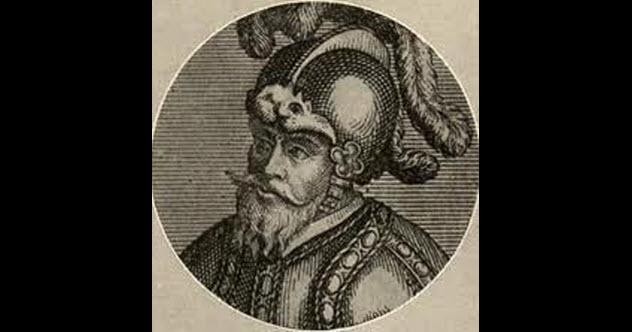
Rodrigo de Bastidas was known as “Spain’s best and noblest conquistador” for his selfless actions and generally humane treatment of the indigenous Americans. Unlike most of the conquistadors, Bastidas was well educated and more of a businessman than a soldier. In June 1500, Bastidas set off on an expedition, financed entirely with his own money, to explore unknown parts of the New World. The Spanish king agreed that Bastidas could keep whatever valuables he found as long as he gave the king 25 percent of the net profits.
Bastidas’s voyage resulted in the discovery of Panama, and the crew collected hordes of gold and pearls along the way. In early 1502, however, both of his ships sunk off the coast of Haiti. Although his men weren’t able to save all of the cargo in time, they did rescue the gold and pearls. The native slaves onboard, unable to escape because they were wrapped in chains, drowned when the ships sank.
The conquistadors then made their way to Santo Domingo (the modern capital of the Dominican Republic). Once there, Bastidas was arrested for breaking the terms of his license, which only granted him the right to trade with the natives in the areas he personally discovered.
After he was taken back to Spain, the charges were dropped, and Bastidas was given royal honors, including the title of governor. He took his family to go live in the New World, settling in Santo Domingo as a cattle rancher. In 1524, he set up the city of Santa Marta, the first European settlement in Colombia. While he and his men were surveying the region, they found a village called Tarbo.
Bastidas wanted good relations with the natives, so he refused to let the colonists take any gold. The chief of Tarbo gave Bastidas about 600 pesos worth of gold, which he spent on the colony instead of distributing to his men.
Growing tired of Bastida’s demands to treat the natives well, over 50 of his men conspired to murder him. They broke into his house one night and tried to stab him to death. Although he initially survived the attack, Spain’s most generous conquistador succumbed shortly afterward to his wounds. All of the conspirators were eventually executed.
3 Francisco de Carbajal
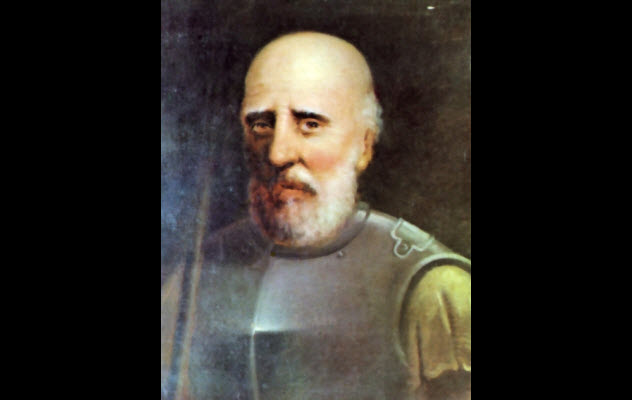
Francisco de Carbajal, “The Demon of the Andes,” was 84 years old when he was executed for his role in Gonzalo Pizarro’s rebellion of the mid-1540s. Before coming to the New World, he spent 40 years fighting in the Spanish army against the French for control of Italy in the Italian Wars. Once in the Americas, despite his elderly age, he continued to fight in battles. For his service in helping to put down a rebellion in Peru, he was given land in Cuzco by Governor Francisco Pizarro.
When Gonzalo Pizarro’s rebellion broke out in 1544, Carbajal tried to flee Peru and return to Spain. Although reluctant to take part in the rebellion, he decided he had no other choice after he was barred from leaving the colony. As Pizarro’s lieutenant, Carbajal was essential to the rebel cause because he was familiar with the terrain and ruthless on the battlefield.
He loved watching enemy soldiers suffer and die, and he took equal delight in mocking captives about to be executed. Out of the 340 executions allegedly carried out by Pizarro’s rebels, over 300 of them were said to be committed by Carbajal. While this number may have been an exaggeration, it demonstrates how much people feared him. Even his own men were afraid of the Demon of the Andes.
After Pizarro’s rebellion was put down, Carbajal was sentenced to be drawn and quartered. Not even death disturbed Carbajal, and he rebuked and made fun of everybody who came to see him in prison. According to historian William Prescott, when someone suggested that Carbajal call for a priest to “unburden his conscience,” Carbajal reacted with contempt. “I have nothing that lies heavy on my conscience,” he scoffed, “unless it be, indeed, the debt of half a real [a Spanish unit of currency] to a shopkeeper in Seville, which I forgot to pay before leaving the country!”
2 Lope de Aguirre
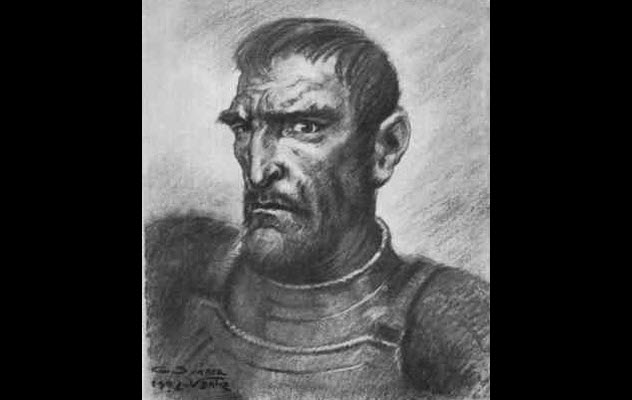
Lope de Aguirre was a Basque conquistador who called himself “The Wrath of God.” Among his many insane misadventures, Aguirre once spent three years searching for a judge who had ordered him to be publicly flogged for disobeying the New Laws. Afraid that Aguirre would try to take revenge, the judge left town right after the punishment was administered.
Aguirre traveled more than 6,000 kilometers (3,700 mi) by foot until he tracked down the judge in Cuzco, Peru. Aguirre then broke into the judge’s mansion and stabbed him to death as he slept in his library. Aguirre hid in the city for more than a month, staying with some sympathizers until he disguised himself as a black servant and escaped.
In September 1560, Aguirre enlisted in an expedition to the Amazon. Pedro de Ursua, the expedition’s leader, suspected that the legendary city of El Dorado was somewhere within the Amazon’s jungles. A year into the mission, Aguirre murdered Ursua and his successor, took control, and became mad with power. He killed anybody who disagreed with him and claimed that he was the prince of Peru.
After capturing Isla Margarita in Venezuela, he was ambushed and surrounded by Spanish troops in Barquisimeto. Before he was captured, Aguirre killed his daughter with a dagger. “I am about to kill thee,” he announced to her, “that thou mayest not be pointed at with scorn nor be in the power of anyone who may call thee the daughter of a traitor.”
The Wrath of God was executed on October 27, 1561, having been shot and then dismembered.
1 Francisco Vazquez de Coronado
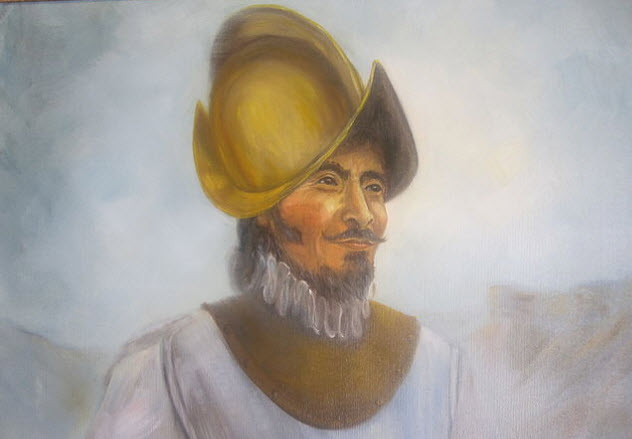
Conquistador Alvar Nunez Cabeza de Vaca and the other three survivors of his failed 1527 expedition to Florida were rescued by the Spanish in 1536. As Vaca and his men told the rescuers about the rumored existence of wealthy cities to the far north of Mexico, Antonio de Mendoza, the viceroy of Mexico, became intrigued. He organized a small search, led by Franciscan monk Marcos de Niza. Niza took with him a black slave named Estebanico, one of the survivors of the Narvaez expedition and a gifted linguist and guide.
Estebanico traveled ahead of the main group, communicating with Niza only by messages he left on crosses. One of his last reports was about “Cibola,” a prosperous land of seven great cities. Before Niza could learn anything more, Estebanico suddenly disappeared. Niza later heard from locals that Estebanico had been killed, but his body never turned up.
Feeling that he was close to discovering the cities, Niza continued on and was stunned to find “a very beautiful city . . . on a level stretch on the brow of a roundish hill.” Still far away, Niza was too afraid to actually walk into the city. Yet he was confident that this was Cibola and happily returned to Mexico to report what he had found.
Together, Mendoza and his friend Francisco Vazquez de Coronado, a notable soldier and governor, agreed to fund a large expedition to Cibola. In February 1540, along with Marco de Niza, Coronado led a party of 300 Spaniards and 1,000 natives on a four-month trip to reach the spot where Niza had claimed to see Cibola. After a battle with the inhabitants, Coronado learned that the town was actually Hawikuh, a poor pueblo community of Zuni tribesmen. Outraged, the conquistadors forced Niza out of the expedition. He had to walk back to Mexico by himself.
Rather than return empty-handed, Coronado tried to find Quivira, another legendary, wealthy land in what is now modern-day Kansas. Although Coronado and his men only found another poor village, they did become the first Europeans to see the Grand Canyon and the Colorado River. With the expedition an evident failure, they returned to Mexico in 1542. The failed expedition bankrupted Mendoza, Coronado, and other investors. With his reputation destroyed, Coronado was forced to resign from his governorship.
Tristan Shaw is the editor of Bizarre and Grotesque, a new blog devoted to unsolved murders, paranormal phenomena, and just downright creepy stuff.


